The Rules of the Game (1939)
Rayting:
8.1/
10 26.9K votes
Language: French | German
Release date: 8 July 1939
A bourgeois life in France at the onset of World War II, as the rich and their poor servants meet up at a French chateau.
Similar Movies
5.3
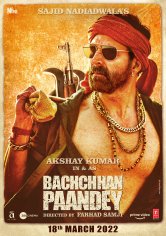
Bachchhan Paandey 2022
6.2
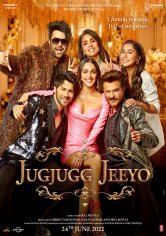
Jug Jugg Jeeyo 2022
5.5

Senior Year 2022
7.0

Chip 'n Dale: Rescue Rangers 2022
5.8

The Man from Toronto 2022
6.0
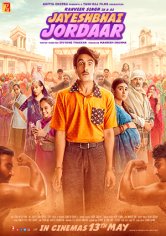
Jayeshbhai Jordaar 2022
6.7

Minions: The Rise of Gru 2022
6.7
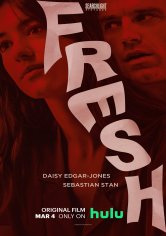
Fresh 2022
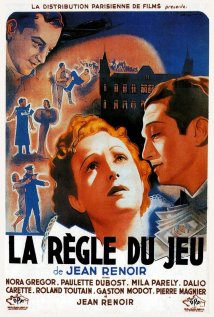

User Reviews
One of the ways in which a film of some age can be immediately identified as great is that we do not really notice that it is old. The same elements that attract us contemporarily are as quickly noted in the landmark movies of yesteryear. So it is with `The Rules of the Game', Jean Renoir's flamboyantly provocative study of class distinction and human folly.
Long heralded as one of the great films of all time, it is of such complexity and has so much great dialogue that in fairness it should be viewed several times. There are so many complex shots and methods of capturing moments that one might discover a new item with each visit. These arrangements run the gamut of half a dozen actors criss-crossing the scope of a shot or the use of mirrors to perhaps focus our attention on something Renoir wants us to appreciate or tuck away for later rumination.
As the movie opens, Lise Elena (as the on-the-scene radio reporter) is perfect in conveying the energy and attention/attraction a record-setting Trans-Atlantic flight would have attracted at the time; the drama of the moment as pilot André Jurieux (Roland Toutain) lands amid pandemonium is caught exactly as it might occur. Renoir is giving us a hero that we almost immediately find is flawed and does not stand up to close inspection, as do none of the great political figures of that time. As the film progresses the hero Jurieux is found wanting in every regard, as it turns out.
Paulette Dubost (as the maid, Lisette) is introduced early as attendant to a key figure - Christine de la Cheyniest (played by Nora Gregor) – and is so heartbreakingly pretty even watching her eat an apple is a guilty pleasure. Christine turns out to be the hub of a wheel of fascination, deception, and unrequited love yet herself is only as exotic as her foreign background. This Mutt and Jeff pairing is nicely shown in drawing room scenes as the high-society semi-charmer is fawned over by the lovely Lisette.
The players intermingle primarily at the chateau of Christine's husband Robert (played by Dalio) and what unfolds is a tale that documents the excesses of both classes. We might say we see a series of interpersonal clashes amidst clueless-in-love slackers with the occasional agenda-wielding guest thrown in; but all this is recorded with just the right touch of realism. So we find that Christine's heart may well lie with the adoring Jurieux, that Lisette is not exactly pining for her gamekeeper husband Schumacher, Robert's lover is not sure of her need for him (or he of his feelings for her) and throughout poor Octave remains a stolid yet curiously uncommitted friend to all.
The only aspect of the film that does not come across well is the sometimes overly hammy acting of some of the players. But with the exception of Renoir himself (playing Octave) this over-the-topness comes in fits and starts, never overwhelming us at all. Renoir's Octave could have been played by Jackie Gleason to great effect.
Very noticeable to current viewers is the great similarity of the more recent `Gosford Park' to this 1939 Jean Renoir film. While Robert Altman's film focuses on class differences so piquantly, `Rules' is actually more sublime. But that hanky-panky and its inevitably hurtful consequence knows no class – despite `Rules' – could not be more fascinating than the depiction given it by Renoir in this film.
Rating: Four Stars.
Fmovies: So whether you'd like to see it this way or not, this is basically one gigantic booty call tale, each character in the story after a particular man or woman, him or herself after another. Sure, it's "love", but really hardly more than a bunch of booty calls all mingled up together to constitute a plot. It's somewhat fun to watch, but there's no actual moral or anything valuable depicted during or at the end of the film.
The cinematography is quite superb, and a treat for cinephiles, in particular those long one-take sequences with the camera traveling through entire rooms and corridors of the prestigious chateau the film takes place in.
But the dialog is neither particularly stale nor interesting, it simply fulfills its obligation and guides the viewer through the various scenes knitted together as the storyline progresses.
The characters are endearing for the ride to some extent but not nearly classics. The ending is fairly predictable and seems to deliver a long awaited main event in that whole romantic mess that lingers for practically two hours, probably a bit much for what it's got in store and proposes to the viewer.
5/10.
THE RULES OF THE GAME takes place on the eve of World War II at an aristocratic house party at an opulent chateau on a country estate just outside of Paris where the overlapping ‘affaires d'amour' of all social classes are observed with a keen and compassionate eye. Renoir looks to the eighteenth-century world of commedia dell'arte and Mozartian opera, and seamlessly integrates farce with tragedy, using a classical form to offer his audience a profound and multifaceted parable on the disturbing realities that underlie the veneer of contemporary French society, and which are themselves symptomatic of the nascent decline of Old World Europe.
The film opens with the arrival of a middle-class aviator, André Jurieu (Roland Toutain), who violates the unwritten `rules' of social propriety by declaring to a radio reporter his disappointment that the woman he had been courting, Christine de la Chesnaye (Nora Grégor), is not present at his reception after completing a record-breaking flight across the Atlantic. His apparent indiscretion of making public his private feelings to high society diminishes his initially heroic stature and his skill with the advanced technology of aircraft is not matched by an ability to deal with people, particularly in matters of love. His careless and unmediated show of desire for a highborn lady not only transgresses the received law of proper social conduct but of traditional class distinctions as well. André's reckless pursuit of his desire, of what he could not have, caused him to behave as one beneath his class in order to rise above his station, and in the end, he was destroyed by the overlapping desire and misguided frustration of yet another man of even lesser social status and refinement. The final killing of André is echoed in Alain Resnais' LAST YEAR AT MARIENBAD (1961), when we see the mysterious `M' (Sascha Pitoëff) dispatch `X' (Giorgio Albertazzi) with a shotgun for apparently having cuckolded him with `A' (Delphine Seyrig) the year before.
Renoir's approach to mise-en-scène is especially groundbreaking. He employs seamless cutting as well as long continuous takes and tracking shots which follow characters as the move from one space to the next in a manner that anticipates the graceful circling, panning, sensuously kinetic camera of Welles, Ophüls, Godard, Resnais, Bertolucci and others. He uses deep-focus compositions, avoiding close-ups by putting many actors in the frame at the same time to suggest multiple viewpoints. The balustrades of La Colinière and the languorous tracking shots down the long corridors undoubtedly inspired those in LAST YEAR AT MARIENBAD while the checkered floor suggests a harlequinade and a chess board upon which the characters maneuver themselves in relation to each other -- like the similarly checkered shuffleboard floor in Antonioni's LA NOTTE (1961) or the geometrically precise arrangement of the garden in MARIENBAD. (Interestingly enough, Coco Chanel designed the costumes for both THE RULES OF THE GAME and LAST YEAR AT MARIENBAD.) Like Antonioni, Renoir frames characters in architectural space, juxtaposing interior and exterior space, such as when the guests arrive at the chateau and a curtain of rain in the foreground obscures their indoor activities. Renoir's fast-moving tracking shots during the rabbit massacre are imitated in Kubrick's PATHS OF GLORY with the camera ominously winding its way through the trenches of World War I. These kinds of tracking shots also serve to keep th
The Rules of the Game fmovies. I'm sure that pretty much anyone who decides to watch this film will be aware of it's status among many critics as one of the greatest films ever made. It may not be exactly that, but it is still a very good movie.
The basic story involves a group of wealthy French aristocrats getting together for a weekend's hunting party at a country chateau just before the start of World War 2. However it's not long before the guests, their hosts and the servants are involved in some complex romantic problems.
The film is beautifully made. Every shot is perfectly well composed and filmed. The film's director, Jean Renoir, was the son of the famous Impressionist painter Auguste Renoir, and Jean Renoir certainly had a good painter's eye himself.
The film depicts a world of casual cruelty and betrayal hidden behind it's polite and civilised facade. Everyone has to play by the iron-bound social rules ("the rules of the game") and those who don't, suffer for it.
Cynical, but often very amusing, this film provoked riots when it premiered in France in a severely shortened form. It exists in various different lengths. The version I saw was a restored 110 minute version on DVD.
This is a film that will not be to all tastes, but it is required viewing for all fans of French cinema or for anyone interested in the history of world cinema.
Jean Renoir said that this was not intended to be a social commentary, and whether he truly intended it to be (he referred to it as, "An exact description of the bourgeoisie of our time.") or not, it is hard to dismiss that it hit close to home. So offended were the masses that the picture was banned. It is said that behind every joke there is truth, and whether this was intended to be a joke or not, Renoir still found truth. One could argue the director's intentions all day, but one matter that cannot be disputed is that this film is extraordinary! As a handful of French men and women converge on a château for a hunting expedition, their love affairs clash with their obligations to society's game. For instance, one cannot leave one's lover to be with another until he has confessed his adultery to her. Attempts to leave with another man's wife are particularly difficult, as well, unless the other man has a mistress of his own. These are but a few rules of the game. The old are for the old, the young are for the young. Members of one social order are forbidden to see members from another, and so on. Combine these rules with a tangled web of countless love affairs between a handful of people, and you can see the madness that erupts during the course of this movie. The parts are all played well, but it is the writing and directing of Renoir that makes the film the masterpiece that it is. Keeping all of these sordid affairs in order is an achievement in its own right, but Renoir moves his pieces all over the board like a skilled chess player, achieving his goal while never forgetting the rules of the game!
At the risk of seeming heretical, I have to confess that having finally seen this film (at the American Museum of the Moving Image in NY), I found it disappointing to some degree.
I can appreciate the provocative candor with which Renoir has created this satire/indictment of a society which has lost its moorings. I think I'm capable of seeing what he was trying to do, and respect the goals he seems to be aiming for. I can also appreciate much of the acting (Nora Gregor seems especially luminous), the dramatic/narrative organization, the witty structural recurrences of things like the old man's "they're a dying race" lines and indeed the overall enormity of Renoir's ambitions. I like what he set out to do, and in most ways I was "on his side" as I watched the film.
And yet -- I find that it doesn't quite all add up for me. Most surprisingly the film seems to be without a very distinct visual style style beyond its overall professionalism. By 1939, the work of Hitchcock, Murnau, Lang, Flaherty, Lubitsch, Eisenstein, Whale, and others had already rampantly shown the potentials of visual style and expressive composition even in the talkie era. Renoir himself had already achieved a masterful job of subtextual visual strategy and meaningful compositions a few years earlier in his powerful GRAND ILLUSION. But that visual confidence is no way in evidence here. Is it because of how many different cinematographers there were?
I'm sure some will point out this or that scene and all the interesting objects within it, a certain fluidity of camera-work, intelligent use of depth-of-focus, interesting overhead shots in the hallway as people headed off to bed at the château, or some of the shots in the kitchen, the hunt or even the almost surreal party .
I will grant you that there is there are some fairly impressive shots now and then, with perhaps the opening scene of the reporter on the runway the most "showy." But after one viewing I have yet to be convinced that there is any distinctive visual personality to the picture. Professionalism, yes. The occasional interesting shot, yes. But the visual creativity or a bravura sense of cinematic identity from the director? I thought not.
But the underlying ideas are what is most important in RULES OF THE GAME, and I give Renoir plenty of credit for successfully exploring them in such a complex way. There are a lot of characters, and we have a strong sense of who they all are once up at the château (contrast this with GOSFORD PARK, where there are a couple of random young men among the upper class whose identities are still a bit obscure when the film is over).
Renoir seems to be balancing on a difficult tightrope of effectively telling a complex story with characters who are not truly meant to be "real" but rather to some degree caricatures in a larger satirical whole. This is perhaps the greatest ambition of the film, and while I'm not convinced it really works, I'm impressed with the diligent thoroughness of how he has attempted to construct it. Much has been said and written about how the public turned against the film when it was released, but I wonder if the real culprit was that the film seems a bit unmoored from any specific context from which an audience could approach it. It has numerous elements of farce, but it is not a farce. It has very witty lines and eventually an overabundance of buffoonery and implausible behavior (from nearly everyone concerned by the last re